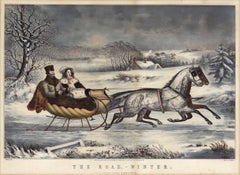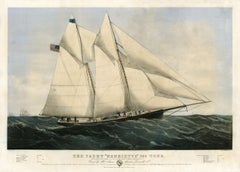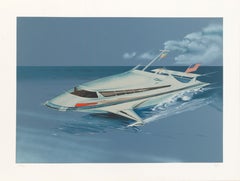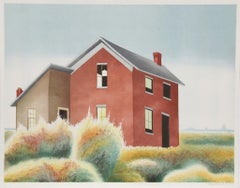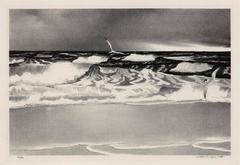
Turbulent Sea.
View Similar Items
Want more images or videos?
Request additional images or videos from the seller
1 of 8
Stow WengenrothTurbulent Sea.1951
1951
About the Item
- Creator:Stow Wengenroth (1906 - 1978, American)
- Creation Year:1951
- Dimensions:Height: 17 in (43.18 cm)Width: 21 in (53.34 cm)Depth: 2 in (5.08 cm)
- Medium:
- Movement & Style:
- Period:
- Condition:
- Gallery Location:New York, NY
- Reference Number:Seller: #26596-11stDibs: LU33121750033
About the Seller
4.6
Recognized Seller
These prestigious sellers are industry leaders and represent the highest echelon for item quality and design.
Established in 1898
1stDibs seller since 2015
50 sales on 1stDibs
Typical response time: 1 to 2 days
Associations
International Fine Print Dealers Association
More From This SellerView All
- Union Pond, Williamsburgh, L. I. [sic].By Winslow HomerLocated in New York, NYUNION POND, WILLIAMSBURGH, L. I. [sic] is a lithograph printed in color in circa 1862. It was published by Thomas & Eno, 37 Park Row, N.Y. The printed image size is 16 3/4 x 27 in...Category
1860s American Realist Landscape Prints
MaterialsLithograph
- The Road, - Winter.By Otto KnirschLocated in New York, NYPublished by N. Currier, 152 Nassau St. New York. Drawn on the stone by O. Knirsch. Lithograph hand-colored, 1853. This print was produced by Nathaniel Currier's staff as a Christ...Category
19th Century American Realist Landscape Prints
MaterialsLithograph
- The Yacht "Henrietta" 205 Tons. Modelled by Mr. Wm. Tooker, N.Y. Built by Mr. ..By Charles ParsonsLocated in New York, NYTitle continues: Built by Mr. Henry Steers, Greenpoint, L. I. Owned by Mr. James Gordon Bennett, Jr. Winner of the Great Ocean Yacht Race, With the ...Category
1860s American Realist Landscape Prints
MaterialsLithograph
- West Cornwall Station.By Armin LandeckLocated in New York, NYArmin Landeck created this 1936 drypoint was printed in an edition of 100. The image size is 6 7/8 x 10 7/8" and the paper size 12 1/2 x 16". It is Signed and dated in the...Category
Mid-20th Century American Realist Landscape Prints
MaterialsDrypoint
- Hidden Cities I / second stateBy Peter MiltonLocated in New York, NY“Hidden Cities I : The Ministry. Second State.” Contemporary artist Peter Milton created this etching and engraving in 2006. The printed image size is Image size 23.50 x 36.88 inches and the paper size is 31 x 42 inches. This impression is signed, dated, and titled in pencil and inscribed “11/75” – the 11th impression from the total printing of 75. “I do love to draw. I feel that I am being granted membership in the Brotherhood of Merlin, conjuring forth some apparition. As a drawing develops, I sense a vague presence coming more and more into focus, something in a white fog emerging and becoming increasingly palpable.” – P. Milton, “The primacy of touch. The Drawings of Peter Milton” “Working in layers, Milton begins with drawings based on people and places, with nods to Western art history and culture. He is a master of the appropriated image, a term that may conjure Andy Warhol and his Pop Art comrades. But Milton steps further back in history, avoiding the Pop sense of cool advertising and popular culture references. Instead, a broader cultural past is tapped through historical photographs of key players, architecture, and locales, which he reinvents by hand. He adds content drawn from his life as an avid reader – always with multiple possible interpretations – thus incorporating deeper meaning in his cinematic worlds. Elements of Greek mythology, classical music, art history, and history coalesce in his images, which embrace the messiness, sorrow, and elation that is life. One is hard-pressed to imagine a more erudite, skilled, passionate, and cheeky soul. In addition to a storied career in printmaking, since 2007 Milton has fearlessly produced artwork digitally. He now creates images using Adobe Photoshop in files consisting of more than two thousand layers, which are printed both as digital prints on paper and, for display on Led light boxes...Category
21st Century and Contemporary American Realist Landscape Prints
MaterialsEngraving, Etching
- CrossingsBy Frederick MershimerLocated in New York, NYCROSSINGS Contemporary artist Frederick Mershimer created the mezzotint engraving entitled "Crossings" in 1998. This impression is signed, titled, and dated in pencil. The printed ...Category
Late 20th Century American Realist Landscape Prints
MaterialsMezzotint
You May Also Like
- HyrdofoilBy Raymond LoewyLocated in Long Island City, NYArtist: Raymond Loewy, American (1893 - 1986) Title: Hydrofoil Year: 1978 Medium: Lithograph, signed and numbered in pencil Edition: 300 Image Size: 17 x 24 inches Size: 21 in. x 28 ...Category
1970s American Realist Figurative Prints
MaterialsLithograph
- Homestead, Lithograph by Clarence Holbrook CarterBy Clarence Holbrook CarterLocated in Long Island City, NYArtist: Clarence Holbrook Carter, American (1904 - 2000) Title: Homestead Year: 1979 Medium: Lithograph, signed and numbered in pencil Edition: 200, AP 30 Size: 23 in. x 29 in. (58....Category
1970s American Realist Landscape Prints
MaterialsLithograph
- "Guggenheim Bilbao" Architectural Silkscreen on Aluminum by Richard HaasBy Richard HaasLocated in Long Island City, NYArtist: Richard Haas, American (1936 - ) Title: Guggenheim Bilbao Year: 2000 Medium: Lithograph and Silkscreen on Aluminum, signed and numbered Edition: 15...Category
Early 2000s American Realist Landscape Prints
MaterialsLithograph, Screen
- Original 'Will You Supply Eyes for the Navy?' vintage American military posterBy Gordon GrantLocated in Spokane, WAOriginal WW1 poster, linen-backed. Very good condition, rare American WW1 antique military poster. Navy ships need binoculars and spy-glasses. Will you ...Category
1910s American Realist Portrait Prints
MaterialsLithograph
- Houses, Photorealist Lithograph by Richard HaasBy Richard HaasLocated in Long Island City, NYArtist: Richard Haas Title: Houses, Texas Year: circa 1980 Medium: Lithograph, signed and numbered in pencil Edition: 10/40 Image Size: 17.5 x 24 inches Paper Size: 21.5 x 29 in. (5...Category
1980s American Realist Landscape Prints
MaterialsLithograph
- 'Threshing' — 1940s American RegionalismBy Thomas Hart BentonLocated in Myrtle Beach, SCThomas Hart Benton, 'Threshing', lithograph, 1941, edition 250, Fath 48. Signed in pencil. Signed in the stone, lower left. A fine, richly-inked impression, on off-white, wove paper, with full margins (1 3/8 to 1 5/8 inches), in excellent condition. Published by Associated American Artists. Image size 9 5/16 x 13 13/16 inches (237 x 351 mm); sheet size 12 1/2 x 16 5/8 inches (318 x 422 mm). Archivally matted to museum standards, unframed. Impressions of this work are held in the following museum collections: Art Institute of Chicago, Fine Arts Museums of San Francisco, High Museum of Art, McNay Art Museum, Montgomery Museum of Fine Arts, and Nelson-Atkins Museum of Art. ABOUT THE ARTIST “Benton’s idiom was essentially political and rhetorical, the painterly equivalent of the country stump speeches that were a Benton family tradition. The artist vividly recalled accompanying his father, Maecenas E. Benton — a four-term U.S. congressman, on campaigns through rural Missouri. Young Tom Benton grew up with an instinct for constituencies that led him to assess art on the basis of its audience appeal. His own art, after the experiments with abstraction, was high-spirited entertainment designed to catch and hold an audience with a political message neatly bracketed between humor and local color.” —Elizabeth Broun “Thomas Hart Benton: A Politician in Art,” Smithsonian Studies in American Art, Spring 1987, p. 61 Born in 1889 in Neosho, Missouri, Benton spent much of his childhood and adolescence in Washington, D.C., where his lawyer father, Maecenas Eason Benton, served as a Democratic member of Congress from 1897 to 1905. Hoping to groom him for a political career, Benton’s father sent him to Western Military Academy. After nearly two years at the academy, Benton convinced his mother to support him through two years at the Art Institute of Chicago, followed by two more years at the Academie Julian in Paris. Benton returned to America in 1912 and moved to New York to pursue his artistic career. One of his first jobs was painting sets for silent movies, which were being produced in Fort Lee, New Jersey. Benton credits this experience with giving him the skills he needed to make his large-scale murals. When World War I broke out, Benton joined the Navy. Stationed in Norfolk, Virginia, he was assigned to create drawings of the camouflaged ships arriving at Norfolk Naval Station. The renderings were used to identify vessels should they be lost in battle. Benton credited being a ‘camofleur’ as having a profound impact on his career. “When I came out of the Navy after the First World War,” he said, “I made up my mind that I wasn’t going to be just a studio painter, a pattern maker in the fashion then dominating the art world–as it still does. I began to think of returning to the painting of subjects, subjects with meanings, which people, in general, might be interested in.” While developing his ‘regionalist’ vision, Benton also taught art, first at a city-supported school and then at The Art Students League (1926–1935). One of his students was a young Jackson Pollock, who looked upon Benton as a mentor and a father figure. In 1930, Benton was commissioned to paint a mural for the New School for Social Research. The ‘America Today’ mural, now on permanent exhibit at the Metropolitan Museum of Art, was followed by many more commissions as Benton’s work gained acclaim. The Regionalist Movement gained popularity during the Great Depression of the 1930s. Painters, including Benton, Grant Wood, and John Steuart Curry, rejected modernist European influences preferring to depict realistic images of small-town and rural life—reassuring images of the American heartland during a period of upheaval. Time Magazine called Benton 'the most virile of U.S. painters of the U.S. Scene,' featuring his self-portrait on the cover of a 1934 issue that included a story about 'The Birth of Regionalism.' In 1935, Benton left New York and moved back to Missouri, where he taught at the Kansas City Art Institute. Benton’s outspoken criticism of modern art, art critics, and political views alienated him from many influencers in political and art scenes. While remaining true to his beliefs, Benton continued to create murals, paintings, and prints of some of the most enduring images of American life. The dramatic and engaging qualities of Benton’s paintings and murals attracted the attention of Hollywood producers. He was hired to create illustrations and posters for films, including his famous lithographs for the film adaptation of John Steinbeck’s ‘Grapes of Wrath’ produced by Twentieth Century Fox. Benton’s work can be found at the Art Institute of Chicago, High Museum of Art, Fine Arts Museums of San Francisco, Library of Congress, McNay Art Museum, Metropolitan Museum of Art, Minneapolis Institute of Arts, Montgomery Museum of Fine Arts, National Gallery of Art, Nelson-Atkins Museum of Art, Smithsonian American Art Museum, Whitney Museum of American Art, The Truman Library and many other museums and galleries across the US. He was elected to the National Academy of Design, has illustrated many books, authored his autobiography, and is the subject of ‘Thomas Hart Benton,’ a documentary by Ken Burns.Category
1940s American Realist Figurative Prints
MaterialsLithograph

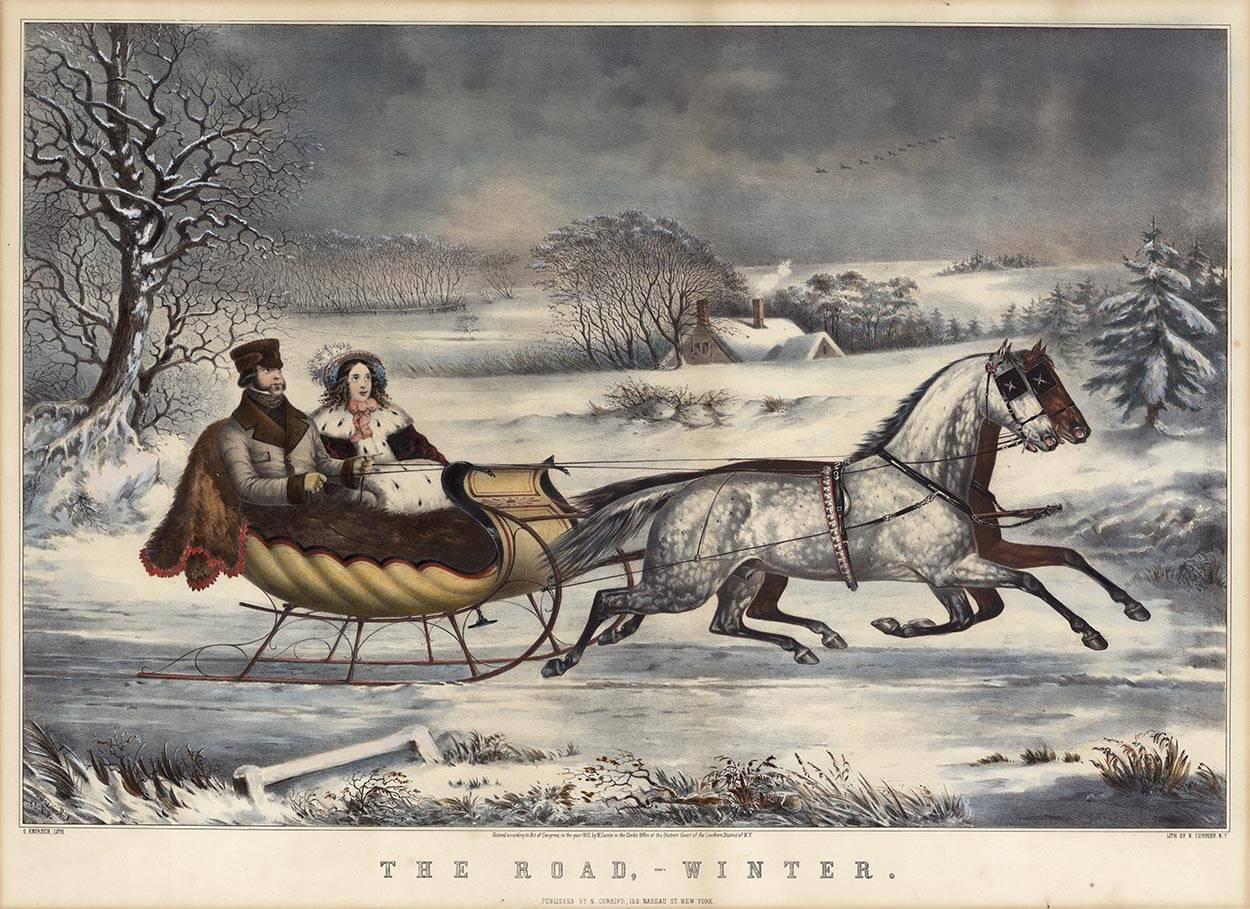

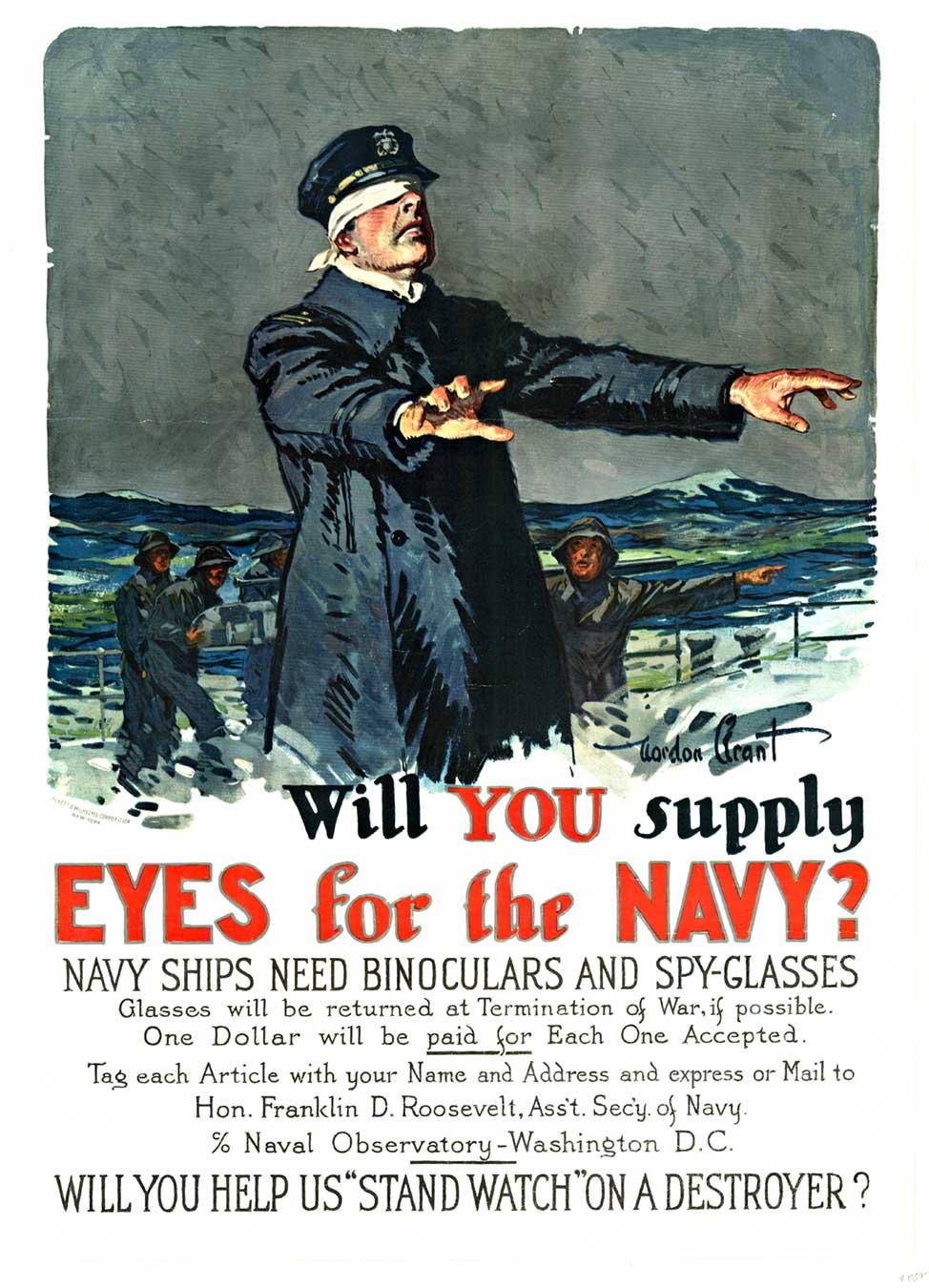
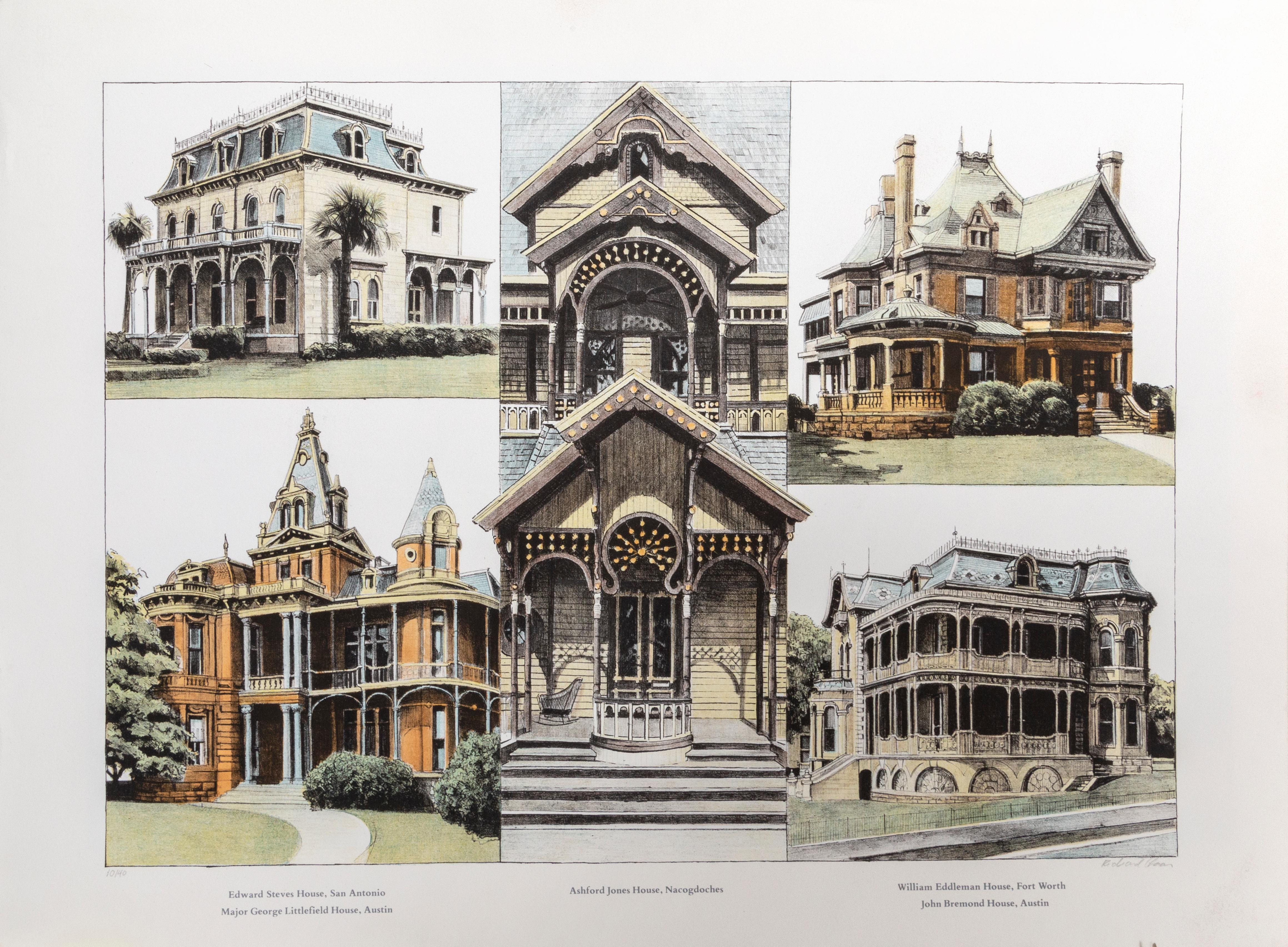
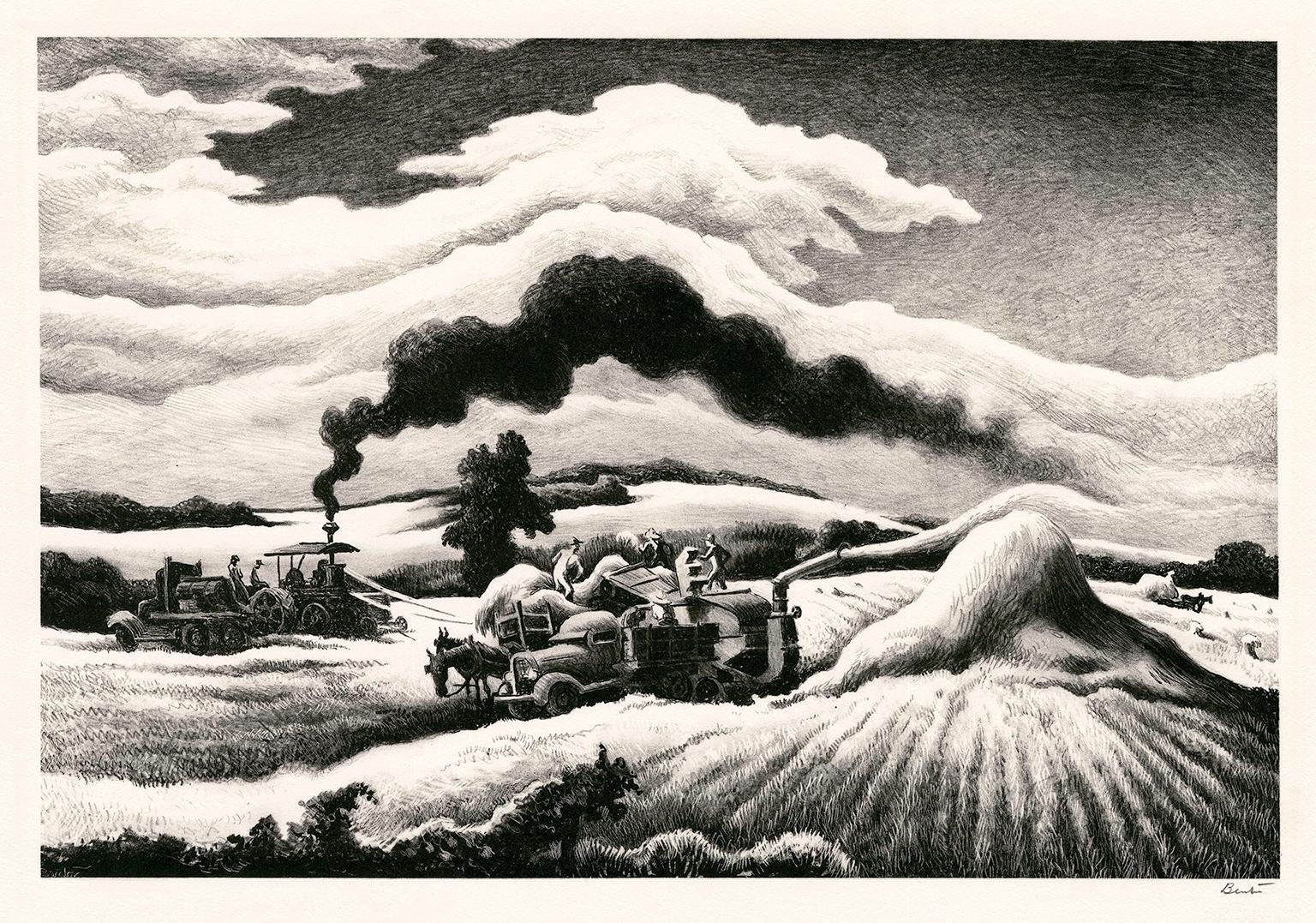

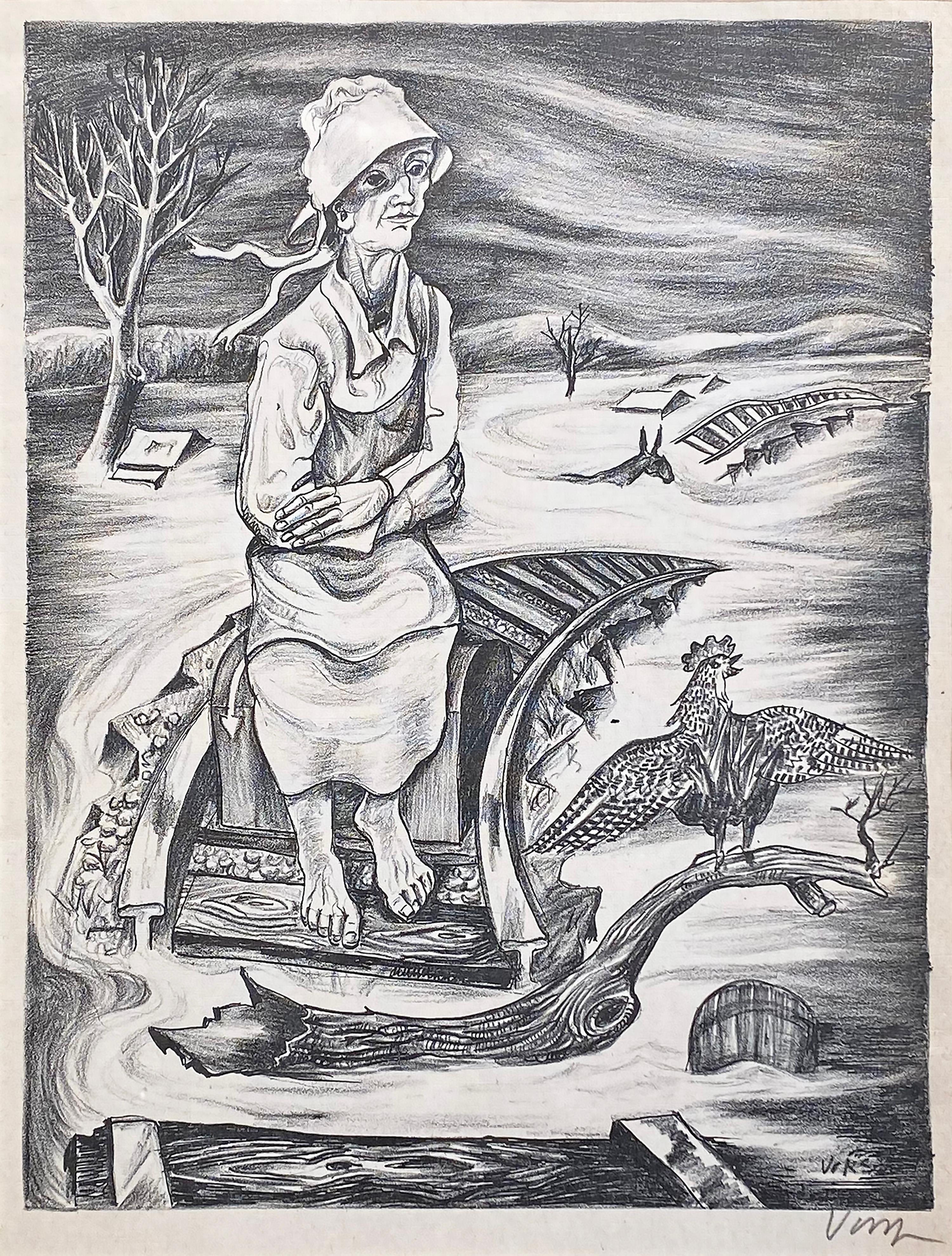

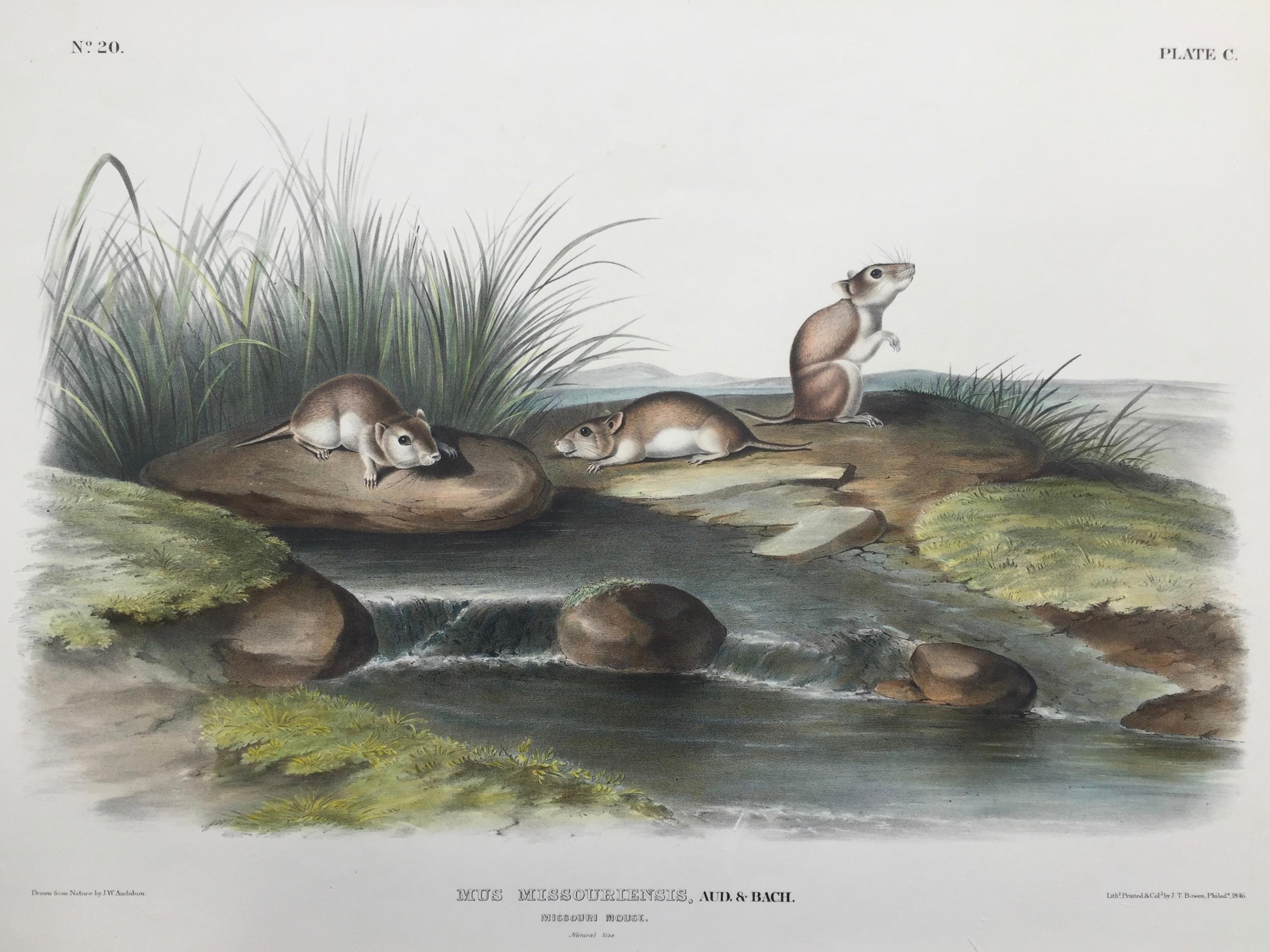
![Union Pond, Williamsburgh, L. I. [sic].](https://a.1stdibscdn.com/winslow-homer-prints-works-on-paper-union-pond-williamsburgh-l-i-sic-for-sale/a_3312/1595513020620/Homer_Union_Pond_frame_IMG_8498_master.jpg?width=240)
